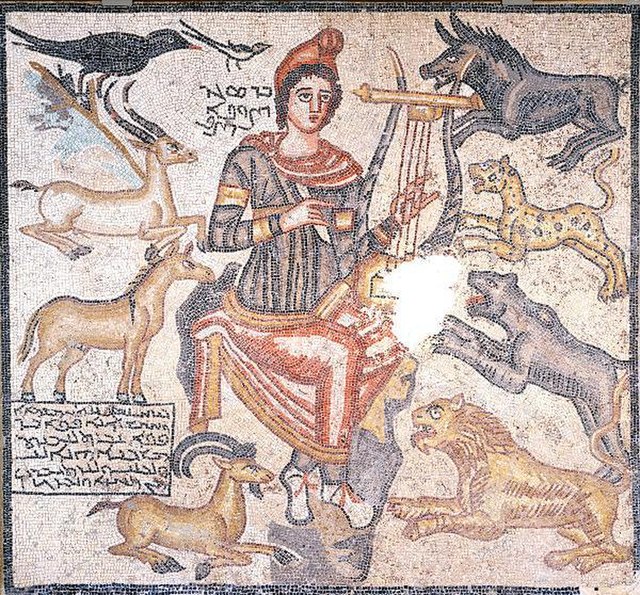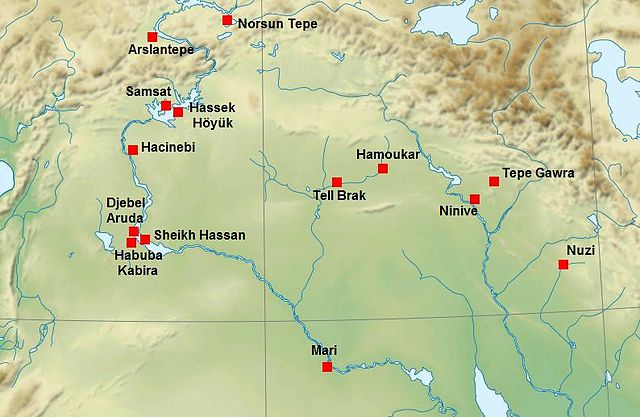Osroene or Osrhoene was an ancient region and state in Upper Mesopotamia. The Kingdom of Osroene, also known as the "Kingdom of Edessa", according to the name of its capital city, existed from the 2nd century BC, up to the 3rd century AD, and was ruled by the Abgarid dynasty. Generally allied with the Parthians, the Kingdom of Osroene enjoyed semi-autonomy to complete independence from the years of 132 BC to AD 214. Though ruled by a dynasty of Arab origin, the kingdom's population was of mixed culture, being Syriac-speaking from the earliest times. The city's cultural setting was fundamentally Syriac, alongside strong Greek and Parthian influences, though some Arab cults were also attested at Edessa.
Ancient mosaic from Edessa (2nd century AD) with inscriptions in the Aramaic language
Coin of king Abgar, who ruled in Osroene during the reign of Roman emperor Septimius Severus (193-211)
Coin of king Abgar, who ruled in Osroene during the reign of Roman emperor Gordianus III (238-244)
Upper Mesopotamia constitutes the uplands and great outwash plain of northwestern Iraq, northeastern Syria and southeastern Turkey, in the northern Middle East. Since the early Muslim conquests of the mid-7th century, the region has been known by the traditional Arabic name of al-Jazira and the Syriac variant Gāzartā or Gozarto (ܓܙܪܬܐ). The Euphrates and Tigris rivers transform Mesopotamia into almost an island, as they are joined together at the Shatt al-Arab in the Basra Governorate of Iraq, and their sources in eastern Turkey are in close proximity.
Tigris river flows through Mosul, near the ancient Assyrian city of Nineveh, which is a major settlement and hosts farmland in Upper Mesopotamia
Monumental stone buildings at Göbekli Tepe, c. 9000 BC
Uruk period (c. 4000 to 3100 BC).






